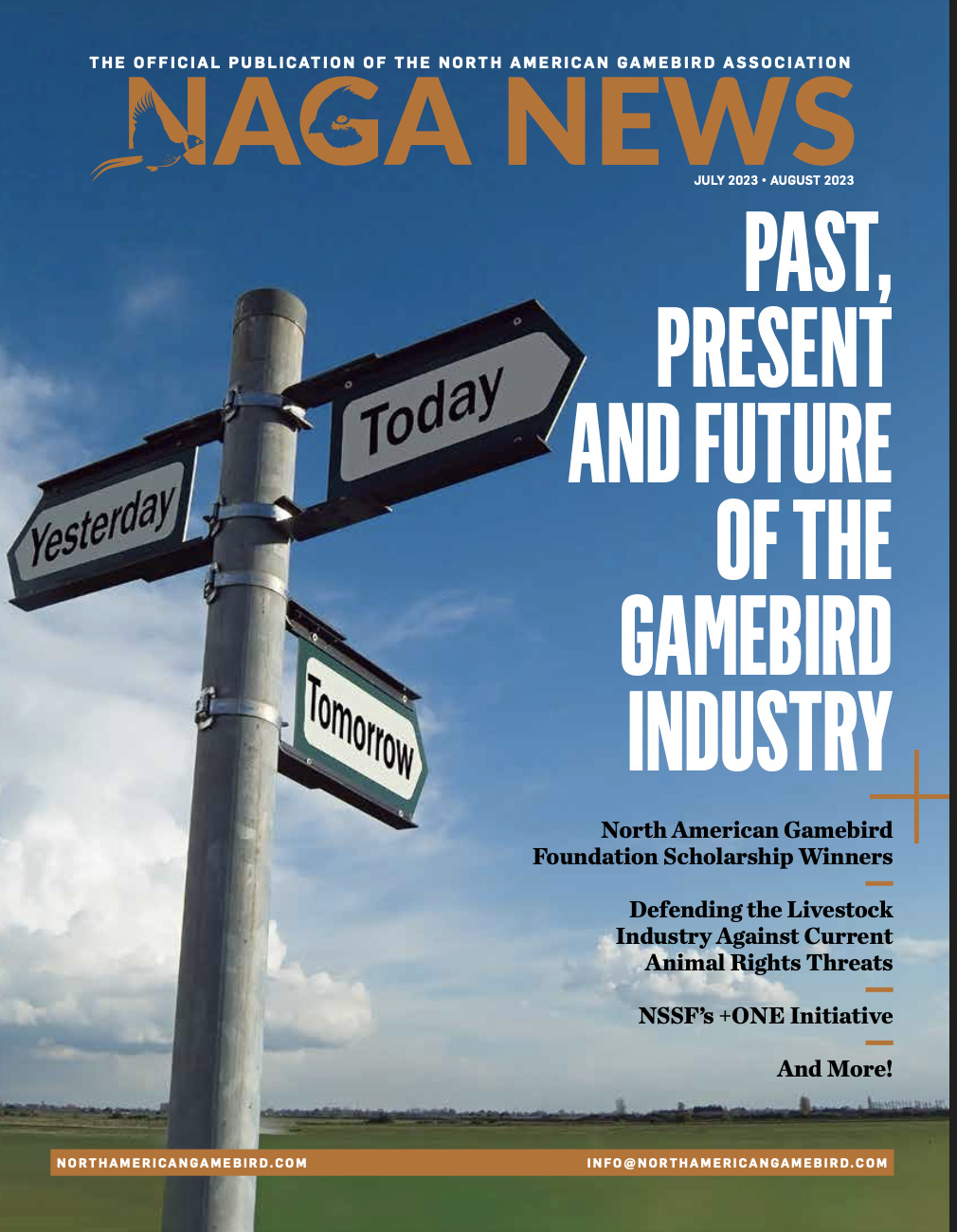By Al Hollister, Ph.D.
Usually, I would present this information in the “Nutrition Notes” section of the NAGA News, but the next edition is months away, and you can use this information well before then.
Feed is one of the significant costs involved in raising gamebirds, and this year feed and other inputs have reached record highs for cost. It’s tempting to request a lower-cost feed, but we must maintain quality – elite athletes don’t perform well on poor-quality food.
The tradition with gamebirds has been to keep it simple; a typical gamebird program usually includes four or five diets: starter, grower, flyer, maintenance and breeder. There are several reasons for this – Feed companies typically require a minimum order for each formula, many growers don’t keep enough birds in each age group or species to use that minimum in a timely manner and more feeds require more storage space and more management time.
But this isn’t the most cost-efficient method for growing birds. Nutritional needs of the birds change with age or the stage of production. Diets need to be designed for the bird’s specific needs, like the species, age, level of production (breeders), stress level, weather conditions, etc., to get the most out of your feed.
“Phase feeding” is one method used for many years in other segments of the poultry industry. For example, in meat turkeys, the toms may be fed seven or more different feeds by the time they reach 18 weeks of age. And laying chickens may have five to eight different feeds during the laying stage alone.
One way we approach phase feeding in gamebirds is by mixing two feeds. For example, we can mix equal parts of a 28% starter and a 20% grower to get a 24 to 25% intermediate diet. This is always recommended when making a feed change to reduce the shock caused by that change.
Likely the best method of using phase feeding to save on costs is to move to a lower-cost, high-volume feed as soon as possible. The highest volume feeds and the most potential for savings is with the grower diet. Protein supplied by soybean meal is the most costly major ingredient. As it turns out, the amino acid amounts and their ratios are the most critical – not total crude protein. So, if we supply the correct amounts of the most important (limiting) amino acids (methionine, lysine, threonine and tryptophan), we can reduce the total protein slightly without a loss in performance, growth, feathering, etc.
If you typically use a 20% “Grower 1” diet, you can use the phase feeding or stepped approach to formulate a “Grower 2” diet of 18% protein during the second half of the grow-out period. Remember, the birds are still growing at this time, so you must keep the amino acids, vitamins and trace minerals at the same level as the Grower 1 diet. This relatively conservative approach usually saves $10-$15 per ton. More radical methods could save more but involve more risk.
If it fits your management plan, other diets can be adjusted in the same way to save on costs or improve performance (like in breeders). Contact me or your favorite nutritionist for more information and cost savings ideas.
Al Hollister, Ph.D., alhollister@aol.com, 847-613-9563


